Gardening FAQ #18 – What You Need To Know
In this article, we share why bean seedlings wilt, if soil can be reused after sterilising and much more. Let’s go through the common gardening FAQ, problems and solutions you need when growing your plants either indoor and outdoor.
Several reasons causing bean seedlings to wilt – a common question in gardening FAQ
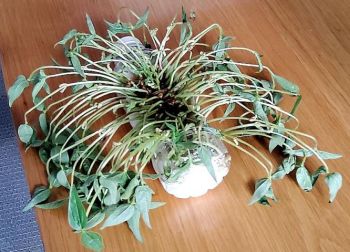 I grew this plant from green beans. I notice the shoots bending downwards recently as I was watering the plant. Is this common or is it because the plant lacks water?
I grew this plant from green beans. I notice the shoots bending downwards recently as I was watering the plant. Is this common or is it because the plant lacks water?
The wilting of your bean seedlings could be due to a number of reasons. They might have dried out. Do the seedlings feel floppy? As plants grow, their demand of water increases and it is important to keep up with their water needs by giving water promptly, especially during hot weather.
Next, check if the roots are healthy. Over-watering can cause roots to suffocate and die, which prevents the uptake of water. As a result, plants will wilt.
They could also be affected by damping off disease, which causes the seedlings to collapse at the base of each plant.
Another reason is the amount of sunlight it received. One of the way to control the sunlight is to use growing lights. You can read up my post on growing lights fixture where I show you the top 4 things you need to know.
Apply neem oil to kill mealy bugs on plant
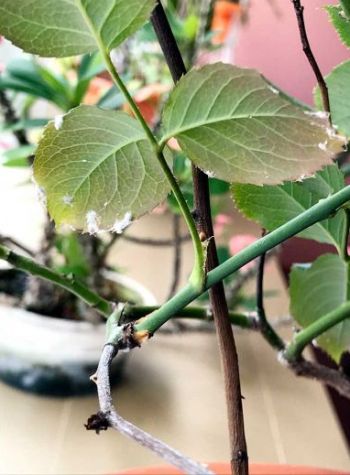 I have some potted plants that seem infected with mites. I have been applying diluted dishwasher liquid (one teaspoon in 300ml water) on the affected areas. It helps to get rid of the infection, but not completely. What can I do?
I have some potted plants that seem infected with mites. I have been applying diluted dishwasher liquid (one teaspoon in 300ml water) on the affected areas. It helps to get rid of the infection, but not completely. What can I do?
The pests attacking your plant appear to be mealy bugs. They suck sap from your plant and if they are in large numbers, the plant can weaken and die eventually.
Inspect plants regularly and manage infestations promptly. To manage the current pest population, you can first use a jet of water to wash off adult pests.
Next, apply a solution of summer oil or neem oil pesticide on all parts of the plant – the pesticide suffocates the pests. Repeated applications are needed to keep the pest population in check.
Snake plants lack water and light
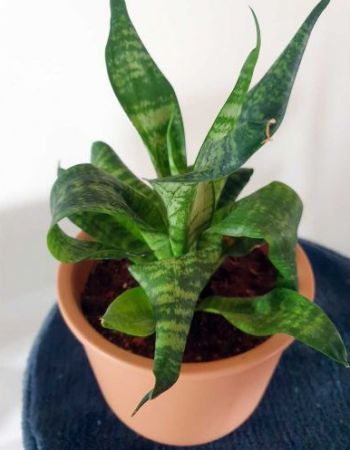 I have some potted snake plants I keep indoors. Lately, the leaves of two of the plants became curved and lumpy. I always use a small water spray and sun the plants twice weekly. What is wrong with the plants?
I have some potted snake plants I keep indoors. Lately, the leaves of two of the plants became curved and lumpy. I always use a small water spray and sun the plants twice weekly. What is wrong with the plants?
The leaves of your snake plants (Sansevieria cultivar) seem to have some wrinkle lines. Together with the curling of the leaf margins, these signs suggest your plants may be lacking water.
Although the snake plant is often regarded as a drought-tolerant plant, it will be detrimental to its health if it has been allowed to dry out for a prolonged period of time.
After each watering, excess water should come out from the drainage holes at the base of the pot – this is an indication your plant has been thoroughly watered. Allow the soil to dry out slightly before watering again.
The slight elongation of the new leaves may also point to the lack of light. Depending on the cultivar, some snake plants do better with several hours of direct sunlight. With sufficient sunlight, your plants will retain the attractive, compact growth habit expected of the cultivar.
One of the way to control the sunlight is to use growing lights. You can read up my post on growing lights fixture where I show you the top 4 things you need to know.
Soil can be reused after sterilising it
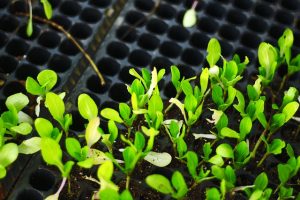
I had some basil plants that seemed to be infected with mealy bugs and I threw them away subsequently. However, I kept the soil in which the plants were grown. Is it safe to reuse this soil?
It can be difficult to advise if the pest that attacked your basil plants earlier is not known.
To be safe, you may want to sterilise the soil before reusing it to grow new plants. The easiest way is perhaps to put the soil in a large bucket and pour in hot water. The soil suspension is then allowed to cool gradually. Then pour out the water and allow the soil to dry.
You will need to break the dried soil into smaller bits by using a hand hoe. Incorporate soil amendments such as good quality compost to improve the soil. Some gardeners also enrich potting soil with organic fertiliser before growing new plants with it.
If you want to grow this indoors under a controlled environment, read our post on Guide to Growing Tents.
For suggestions on how to control another plant worst enemy, head over to our section on Weed & Moss Control.
Plant from the melon family but is a weed
I saw this climber, currently bearing fruit. I cannot identify it. What is this plant? Can it be eaten?
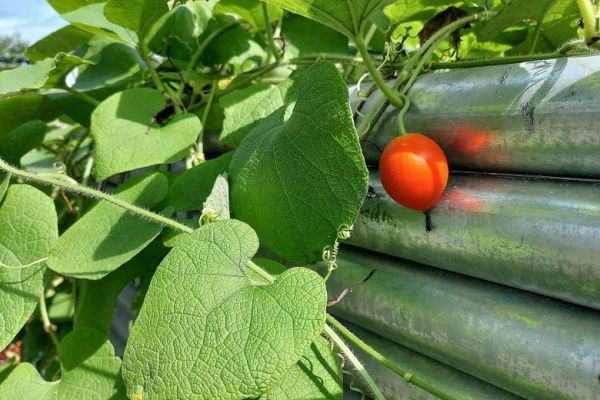
The plant often grows as a weed in wastelands. It is botanically known as Gymnopetalum scabrum and a member of the melon family (Cucurbitaceae).
It is not known to have food uses. Don’t eat it!